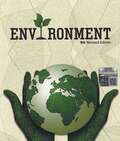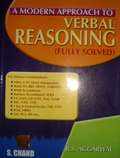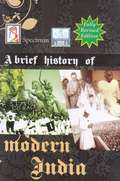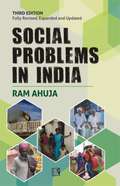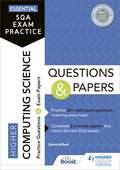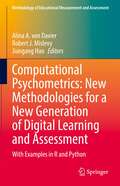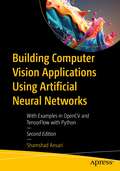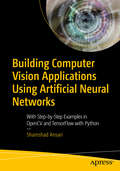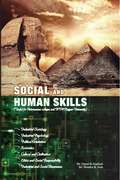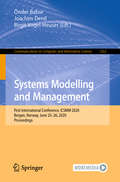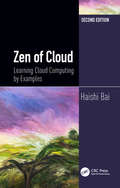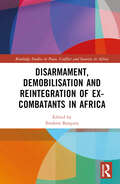Special Collections
Competitive Exam
- Table View
- List View
Environment
by Shankar Ias AcademyTo help students in acquiring the essentials of the topic 'environment’ during preparation for Civil Services Examination, Shankar IAS Academy has brought the book, 'environment’. This book follows the paper pattern and syllabus given by Union Public Service Commission which conducts these examinations. The language of the book is simple and the content is engaging which ensures students face no trouble during studying. Plus the distinctive designing makes it easy to navigate and read. This bestseller book has sold over 30, 000 copies and is widely read by students. A team of highly experienced writers from Shankar IAS Academy have written this book and hence it is accurate and reliable. The updated syllabus of UPSC focuses a lot on environment. The geography Paper of the Civil Service Examination includes topics on environment and hence it is important for students to have thorough understanding of this topic. This book is completely dedicated on environment and covers all concepts and points. It focuses on topics like environmental ecology, bio-diversity and Climate change. Some of the topics discussed in the book include ecological pyramid and nutrient cycling, ecosystem rainforest, deciduous monsoon forest, Biome, bread basket region, food chain, primary consumer, food web, ecological pyramid, ecological explosion, ecotone, chemosynthesis, biogeochemical cycle, Miss semple, possibilism, br>stratosphere, biosphere, species types, nutritional eutrophication, acid rain, marble cancer, soil types, biogeographical realm, xerophytic, Nitrogen cycle, greenhouse gas, biodiversity hotspots, Ozone depletion, club of Rome, planktonic, biological magnification, young lakes, good Ozone and bio-diversity loss. Along with clear explanations the book gives adequate practice for students so that they can test their knowledge and check their understandings. Shankar IAS Academy began its journey in the year 2004.
Environment - IAS Competitive Exam
by Shankar Ias AcademyEnvironment - 8th edition, 2021 - To help students in acquiring the essentials of the topic 'environment’ during preparation for Civil Services Examination, Shankar IAS Academy has brought the book, 'environment’. This book follows the paper pattern and syllabus given by Union Public Service Commission which conducts these examinations. The language of the book is simple and the content is engaging which ensures students face no trouble during studying. Plus the distinctive designing makes it easy to navigate and read. This bestseller book has sold over 30, 000 copies and is widely read by students. A team of highly experienced writers from Shankar IAS Academy have written this book and hence it is accurate and reliable. The updated syllabus of UPSC focuses a lot on environment. The geography Paper of the Civil Service Examination includes topics on environment and hence it is important for students to have thorough understanding of this topic. This book is completely dedicated on environment and covers all concepts and points. It focuses on topics like environmental ecology, bio-diversity and Climate change. Some of the topics discussed in the book include ecological pyramid and nutrient cycling, ecosystem rainforest, deciduous monsoon forest, Biome, bread basket region, food chain, primary consumer, food web, ecological pyramid, ecological explosion, ecotone, chemosynthesis, biogeochemical cycle, Miss semple, possibilism, stratosphere, biosphere, species types, nutritional eutrophication, acid rain, marble cancer, soil types, biogeographical realm, xerophytic, Nitrogen cycle, greenhouse gas, biodiversity hotspots, Ozone depletion, club of Rome, planktonic, biological magnification, young lakes, good Ozone and bio-diversity loss. Along with clear explanations the book gives adequate practice for students so that they can their knowledge and check their understandings.
A Modern Approach To Verbal Reasoning (Fully Solved)
by R. S. AggarwalPublished by S. Chand Publishers, "A Modern Approach to Verbal and Non-Verbal Reasoning" has been written based on the syllabi of the various competitive examinations to aid the students understand and cope with this much overlooked yet important portion.Authored by Professor R.S. Aggarwal, the book is laid in two sections that tease, test and ultimately improve ones reasoning skills. The first section deals with verbal reasoning. This section has further been divided into two sub-divisions that elaborate on various ways how verbal reasoning is tested and how to apply logic to arrive at the answer. The second section, entitled Non Verbal Reasoning has sub-divisions that acquaints a student about an analytical approach towards solving non-verbal reasoning problems.Reasoning, both verbal and non-verbal, make up a important section of not only the public examinations like income tax, bank, civil services but are also integral for entrance examinations conducted for admissions into MBA, hotel management, MCA and BEd programs as well. Hence, a handy book such as this one is a necessity for the students preparing for any of them. Written in crisp, clear and easy to understand language with proper illustrations wherever necessary, this book provides detailed information on the subject.Apart from the solved questions with full illustrations of the steps, the book also contains various unsolved problems for the students to solve and be adept with the whole process. The answers are provided at the back in details to aid the students in coping with different types of problems.From bank exams, income tax, railways, UPSC and civil services to CAT and other competitive entrance examinations, this book has been referred to as the prime study-tool for the entire verbal and non-verbal reasoning portion.
Bhartiya Darshan- Competitive Exam
by Vimal Aggarwalप्रस्तुत पुस्तक भारतीय दर्शन की प्रकृति एवं उद्देश्य उनकी मूलभूत विशेषताएँ, महत्व एवं उपयोगिता, धर्म एवं लोक से संबंधित मानव कल्याण की ओर संकेत करता है।, जैन एवं बौ्द्ध दर्शन उनकी शिक्षाएँ, जीव एवं ब्रह्मा में संबंध, ब्रह्म जगत का स्वरूप, आत्मा का स्वरूप, जगत में जीव बन्धन एवं मोक्ष, आदि विषय को केन्द्रित किया है। लेखक ने भारतीय दर्शन में जो विषय चुने है उसकी भाषा सरल एवं विद्यार्थी गण के लिए अर्थपूर्ण है। भारतीय दर्शन की विषय सामग्री और उस पर आधारित प्रश्नों का विभाजन विद्यार्थियों के लिए सही और सरल ढंग से समझने योग्य है इस ढंग से यह पुस्तक और भी उपयोगी सिद्ध होती है।
A Brief History of Modern India - Competitive Exam
by Rajiv AhirThis book brings together various aspects of the turbulent period (from arrival of the Europeans on Indian soil and the establishment of British rule in India to the day India won independence and the early years of freedom) in a systematic and succinct manner: major and important details and milestones are effectively discussed while several relevant but little known details are also highlighted. It is not just the mainstream freedom struggle that has been considered; the disparate efforts—small but significant— of several groups have also been discussed. The political and socio-economic developments that have influenced the growth of modern India have been dealt with in independent chapters.
Samajik Anusandhan - Competitive Exam
by Ram Ahujaयह पुस्तक स्नाकोत्तर छात्रों को लिए सैद्धान्तिक ज्ञान को सरल विधि से प्रस्तुत करने में सहायक सिद्ध होती है इसमें वैज्ञानिक अनुसंधान, सामाजिक अनुसंधान जाँच के तर्क के नियम, समस्या निरूपण प्रश्नावली, साक्षात्कार, अवलोकन, वैयक्तिक अध्ययन का अर्थ विशेषताएं, और सिद्धान्त, उद्देश्य, विषय वस्तु, प्रक्षेपी तकनीकें, आधार सामग्री संसाधन, माप और अनुमाप तकनीकें आदि विषय को बहुत ही सरल भाषा में समझाने का तरीका बताया है। सभी विषय की अलग अलग समस्यायें, उनकी क्या सीमायें है उनके गुण, लाभ, और उनके सिद्धान्तों के विकास के बारे में वर्णन किया गया है। इस प्रकार यह पुस्तक वास्तव में सामाजिक अनुसंधान के समस्त विषय को सही तरीके से छात्रों के पढ़ने और सीखने के लिए उपयोगी सिद्ध हुई है।
Social Problem In India - Competitive Exam
by Ram AhujaSocial Problems in India has established itself as a leading textbook in the field of sociology. This fully revised, updated, and expanded edition distinguishes itself from the previous (second) edition by having added five more chapters on domestic violence, ageing and elder abuse, tribal unrest, globalization and consumerism, and agricultural distress and farmers' suicides. Other issues are also discussed, such as honor killings, acid attacks, and cyber crimes. Problems discussed in the earlier edition (terrorism, alcoholism, communal violence, drug abuse, child abuse, violence against women, youth unrest, population explosion, juvenile delinquency, unemployment, poverty, urbanization, and illiteracy) have been updated. New arguments/comments that reflect new developments have been provided. The book offers analysis and critical evaluation with a sociological perspective and also gives theoretical explanations wherever deemed necessary, increasing the academic importance of the book, not only for students and those preparing for the competitive examinations, but also for administrators, policy makers, planners, and a much wider audience.
Essential SQA Exam Practice: Higher Computing Science Questions and Papers
by David AlfordExam board: SQALevel: HigherSubject: Computing ScienceFirst teaching: September 2018First exam: Summer 2019Practice makes permanent. Feel confident and prepared for the SQA Higher Computing Science exam with this two-in-one book, containing practice questions for every topic, plus two full practice papers - all written by an experienced marker.- Choose which topics you want to revise: A simple grid enables you to pick particular areas of the course that you want to answer questions on, with solutions provided at the back of the book- Remember more in your exam: Repeated and extended practice will give you a secure knowledge of the key areas of the course (software design and development; computer systems; database design and development; web design and development) Familiarise yourself with the exam paper: Both practice papers mirror the language and layout of the real SQA papers; complete them in timed, exam-style conditions to increase your confidence before the exams- Find out how to achieve a better grade: Answers to the practice papers have commentaries for each question, with tips on writing successful answers and avoiding common mistakesFully up to date with SQA's requirementsThe questions, mark schemes and guidance in this practice book match the requirements of the revised SQA Higher Computing Science specification for examination from 2019 onwards.
Essential SQA Exam Practice: Higher Computing Science Questions and Papers
by David AlfordExam board: SQALevel: HigherSubject: Computing ScienceFirst teaching: September 2018First exam: Summer 2019Practice makes permanent. Feel confident and prepared for the SQA Higher Computing Science exam with this two-in-one book, containing practice questions for every topic, plus two full practice papers - all written by an experienced marker.- Choose which topics you want to revise: A simple grid enables you to pick particular areas of the course that you want to answer questions on, with solutions provided at the back of the book- Remember more in your exam: Repeated and extended practice will give you a secure knowledge of the key areas of the course (software design and development; computer systems; database design and development; web design and development) Familiarise yourself with the exam paper: Both practice papers mirror the language and layout of the real SQA papers; complete them in timed, exam-style conditions to increase your confidence before the exams- Find out how to achieve a better grade: Answers to the practice papers have commentaries for each question, with tips on writing successful answers and avoiding common mistakesFully up to date with SQA's requirementsThe questions, mark schemes and guidance in this practice book match the requirements of the revised SQA Higher Computing Science specification for examination from 2019 onwards.
Computational Psychometrics
by Robert J. Mislevy and Alina A. von Davier and Jiangang HaoThis book defines and describes a new discipline, named “computational psychometrics,” from the perspective of new methodologies for handling complex data from digital learning and assessment. The editors and the contributing authors discuss how new technology drastically increases the possibilities for the design and administration of learning and assessment systems, and how doing so significantly increases the variety, velocity, and volume of the resulting data. Then they introduce methods and strategies to address the new challenges, ranging from evidence identification and data modeling to the assessment and prediction of learners’ performance in complex settings, as in collaborative tasks, game/simulation-based tasks, and multimodal learning and assessment tasks.Computational psychometrics has thus been defined as a blend of theory-based psychometrics and data-driven approaches from machine learning, artificial intelligence, and data science. All these together provide a better methodological framework for analysing complex data from digital learning and assessments. The term “computational” has been widely adopted by many other areas, as with computational statistics, computational linguistics, and computational economics. In those contexts, “computational” has a meaning similar to the one proposed in this book: a data-driven and algorithm-focused perspective on foundations and theoretical approaches established previously, now extended and, when necessary, reconceived. This interdisciplinarity is already a proven success in many disciplines, from personalized medicine that uses computational statistics to personalized learning that uses, well, computational psychometrics. We expect that this volume will be of interest not just within but beyond the psychometric community.In this volume, experts in psychometrics, machine learning, artificial intelligence, data science and natural language processing illustrate their work, showing how the interdisciplinary expertise of each researcher blends into a coherent methodological framework to deal with complex data from complex virtual interfaces. In the chapters focusing on methodologies, the authors use real data examples to demonstrate how to implement the new methods in practice. The corresponding programming codes in R and Python have been included as snippets in the book and are also available in fuller form in the GitHub code repository that accompanies the book.
Computational Psychometrics
by Robert J. Mislevy and Alina A. von Davier and Jiangang HaoThis book defines and describes a new discipline, named “computational psychometrics,” from the perspective of new methodologies for handling complex data from digital learning and assessment. The editors and the contributing authors discuss how new technology drastically increases the possibilities for the design and administration of learning and assessment systems, and how doing so significantly increases the variety, velocity, and volume of the resulting data. Then they introduce methods and strategies to address the new challenges, ranging from evidence identification and data modeling to the assessment and prediction of learners’ performance in complex settings, as in collaborative tasks, game/simulation-based tasks, and multimodal learning and assessment tasks.Computational psychometrics has thus been defined as a blend of theory-based psychometrics and data-driven approaches from machine learning, artificial intelligence, and data science. All these together provide a better methodological framework for analysing complex data from digital learning and assessments. The term “computational” has been widely adopted by many other areas, as with computational statistics, computational linguistics, and computational economics. In those contexts, “computational” has a meaning similar to the one proposed in this book: a data-driven and algorithm-focused perspective on foundations and theoretical approaches established previously, now extended and, when necessary, reconceived. This interdisciplinarity is already a proven success in many disciplines, from personalized medicine that uses computational statistics to personalized learning that uses, well, computational psychometrics. We expect that this volume will be of interest not just within but beyond the psychometric community.In this volume, experts in psychometrics, machine learning, artificial intelligence, data science and natural language processing illustrate their work, showing how the interdisciplinary expertise of each researcher blends into a coherent methodological framework to deal with complex data from complex virtual interfaces. In the chapters focusing on methodologies, the authors use real data examples to demonstrate how to implement the new methods in practice. The corresponding programming codes in R and Python have been included as snippets in the book and are also available in fuller form in the GitHub code repository that accompanies the book.
Building Computer Vision Applications Using Artificial Neural Networks
by Shamshad AnsariComputer vision is constantly evolving, and this book has been updated to reflect new topics that have emerged in the field since the first edition’s publication. All code used in the book has also been fully updated. This second edition features new material covering image manipulation practices, image segmentation, feature extraction, and object identification using real-life scenarios to help reinforce each concept. These topics are essential for building advanced computer vision applications, and you’ll gain a thorough understanding of them. The book’s source code has been updated from TensorFlow 1.x to 2.x, and includes step-by-step examples using both OpenCV and TensorFlow with Python. Upon completing this book, you’ll have the knowledge and skills to build your own computer vision applications using neural networks What You Will Learn Understand image processing, manipulation techniques, and feature extraction methodsWork with convolutional neural networks (CNN), single-shot detector (SSD), and YOLOUtilize large scale model development and cloud infrastructure deploymentGain an overview of FaceNet neural network architecture and develop a facial recognition system Who This Book Is For Those who possess a solid understanding of Python programming and wish to gain an understanding of computer vision and machine learning. It will prove beneficial to data scientists, deep learning experts, and students.
Building Computer Vision Applications Using Artificial Neural Networks
by Shamshad AnsariComputer vision is constantly evolving, and this book has been updated to reflect new topics that have emerged in the field since the first edition’s publication. All code used in the book has also been fully updated. This second edition features new material covering image manipulation practices, image segmentation, feature extraction, and object identification using real-life scenarios to help reinforce each concept. These topics are essential for building advanced computer vision applications, and you’ll gain a thorough understanding of them. The book’s source code has been updated from TensorFlow 1.x to 2.x, and includes step-by-step examples using both OpenCV and TensorFlow with Python. Upon completing this book, you’ll have the knowledge and skills to build your own computer vision applications using neural networks What You Will Learn Understand image processing, manipulation techniques, and feature extraction methodsWork with convolutional neural networks (CNN), single-shot detector (SSD), and YOLOUtilize large scale model development and cloud infrastructure deploymentGain an overview of FaceNet neural network architecture and develop a facial recognition system Who This Book Is For Those who possess a solid understanding of Python programming and wish to gain an understanding of computer vision and machine learning. It will prove beneficial to data scientists, deep learning experts, and students.
Building Computer Vision Applications Using Artificial Neural Networks
by Shamshad AnsariApply computer vision and machine learning concepts in developing business and industrial applications using a practical, step-by-step approach. The book comprises four main sections starting with setting up your programming environment and configuring your computer with all the prerequisites to run the code examples. Section 1 covers the basics of image and video processing with code examples of how to manipulate and extract useful information from the images. You will mainly use OpenCV with Python to work with examples in this section. Section 2 describes machine learning and neural network concepts as applied to computer vision. You will learn different algorithms of the neural network, such as convolutional neural network (CNN), region-based convolutional neural network (R-CNN), and YOLO. In this section, you will also learn how to train, tune, and manage neural networks for computer vision. Section 3 provides step-by-step examples of developing business and industrial applications, such as facial recognition in video surveillance and surface defect detection in manufacturing. The final section is about training neural networks involving a large number of images on cloud infrastructure, such as Amazon AWS, Google Cloud Platform, and Microsoft Azure. It walks you through the process of training distributed neural networks for computer vision on GPU-based cloud infrastructure. By the time you finish reading Building Computer Vision Applications Using Artificial Neural Networks and working through the code examples, you will have developed some real-world use cases of computer vision with deep learning. What You Will Learn · Employ image processing, manipulation, and feature extraction techniques · Work with various deep learning algorithms for computer vision · Train, manage, and tune hyperparameters of CNNs and object detection models, such as R-CNN, SSD, and YOLO · Build neural network models using Keras and TensorFlow · Discover best practices when implementing computer vision applications in business and industry · Train distributed models on GPU-based cloud infrastructure Who This Book Is For Data scientists, analysts, and machine learning and software engineering professionals with Python programming knowledge.
Building Computer Vision Applications Using Artificial Neural Networks
by Shamshad AnsariApply computer vision and machine learning concepts in developing business and industrial applications using a practical, step-by-step approach. The book comprises four main sections starting with setting up your programming environment and configuring your computer with all the prerequisites to run the code examples. Section 1 covers the basics of image and video processing with code examples of how to manipulate and extract useful information from the images. You will mainly use OpenCV with Python to work with examples in this section. Section 2 describes machine learning and neural network concepts as applied to computer vision. You will learn different algorithms of the neural network, such as convolutional neural network (CNN), region-based convolutional neural network (R-CNN), and YOLO. In this section, you will also learn how to train, tune, and manage neural networks for computer vision. Section 3 provides step-by-step examples of developing business and industrial applications, such as facial recognition in video surveillance and surface defect detection in manufacturing. The final section is about training neural networks involving a large number of images on cloud infrastructure, such as Amazon AWS, Google Cloud Platform, and Microsoft Azure. It walks you through the process of training distributed neural networks for computer vision on GPU-based cloud infrastructure. By the time you finish reading Building Computer Vision Applications Using Artificial Neural Networks and working through the code examples, you will have developed some real-world use cases of computer vision with deep learning. What You Will Learn · Employ image processing, manipulation, and feature extraction techniques · Work with various deep learning algorithms for computer vision · Train, manage, and tune hyperparameters of CNNs and object detection models, such as R-CNN, SSD, and YOLO · Build neural network models using Keras and TensorFlow · Discover best practices when implementing computer vision applications in business and industry · Train distributed models on GPU-based cloud infrastructure Who This Book Is For Data scientists, analysts, and machine learning and software engineering professionals with Python programming knowledge.
Samagra Karnaṭaka Itihasa (Arambhadinda- Indinavarege) Part-1 - Competitive Exam
by Dr G. Shivappa Arivuಸಮಗ್ರ ಕರ್ನಾಟಕ ಇತಿಹಾಸ Ias, Kas, Kes, Ugc, Net, Selt, Pu, Bed, Ded, Fdc, Sdc, Pdo, ಮತ್ತು ಎಲ್ಲಾ ಸ್ಪರ್ಧಾತ್ಮಕ ಪರೀಕ್ಷೆಗಳಿಗೆ ಉಪಯುಕ್ತವಾಗಿದೆ.
Samagra Karnataka Itihasa (Arambhadinda Indinavarege) Part 2
by Dr G. Shivappa Arivuಈ ಸಮಗ್ರ ಕರ್ನಾಟಕ ಇತಿಹಾಸ (ಆರಂಭಿಂದ ಇಂದಿನವರೆಗೆ ಪುಸ್ತಕವು ಎಲ್ಲಾ ಸ್ಪರ್ಧಾತ್ಮಕ ಪರೀಕ್ಷೆಗಳ ಹುದ್ದೆಗಳಿಗಾಗಿ ಸರಳವಾದ ಸಂಕ್ಷಿಪ್ತ ಕೈಪಿಡಿಯಾಗಿದೆ.
Samagra Karnaṭaka Itihasa (Arambhadinda- Indinavarege) Part-2 - Competitive Exam
by Dr G. Shivappa Arivuಸಮಗ್ರ ಕರ್ನಾಟಕ ಇತಿಹಾಸ Ias, Kas, Kes, Ugc, Net, Selt, Pu, Bed, Ded, Fdc, Sdc, Pdo, ಮತ್ತು ಎಲ್ಲಾ ಸ್ಪರ್ಧಾತ್ಮಕ ಪರೀಕ್ಷೆಗಳಿಗೆ ಉಪಯುಕ್ತವಾಗಿದೆ.
Social and Human Skills (Useful for Autonomous colleges and RTM Nagpur University)
by Dr Vinod H. Asudani and Dr Monika R. SethAs integral part of the society every individual should have detailed knowledge about it. So the Universities in India accepted Humanities and Social Science subject as part of the curriculum of many Engineering branches. These subjects help to make students aware of various issues related to man and society. This book deals comprehensively with the important aspects of Social and Human skills required for an Engineering to be a part of society. The content of this book has been extensively researched. It provides an exhaustive yet simple explanation of various concepts of Social science. The content of every chapter are made as independent as possible so that you can pick up a particular topic and understand the topic easily. We hope that this book will trigger your interest in the field of Humanities and Social Sciences.
Systems Modelling and Management
by Birgit Vogel-Heuser and Önder Babur and Joachim DenilThis book constitutes the refereed proceedings of the First International Conference on Systems Modelling and Management, ICSMM 2020, planned to be held in Bergen, Norway, in June 2020. Due to the COVID-19 pandemic the conference did not take place physically or virtually. The 10 full papers and 3 short papers were thoroughly reviewed and selected from 19 qualified submissions. The papers are organized according to the following topical sections: verification and validation; applications; methods, techniques and tools.
Systems Modelling and Management
by Birgit Vogel-Heuser and Önder Babur and Joachim DenilThis book constitutes the refereed proceedings of the First International Conference on Systems Modelling and Management, ICSMM 2020, planned to be held in Bergen, Norway, in June 2020. Due to the COVID-19 pandemic the conference did not take place physically or virtually. The 10 full papers and 3 short papers were thoroughly reviewed and selected from 19 qualified submissions. The papers are organized according to the following topical sections: verification and validation; applications; methods, techniques and tools.
Zen of Cloud
by Haishi BaiThis book provides a comprehensive review of cloud philosophy, design principals, development trends as well as practical patterns to guide readers to understand, design and implement successful cloud-based solutions. This book provides both "hows" and "whys." It peers behind the buzz words such as machine learning, containers, and blockchains to help readers understand how to put those technologies into practical use. This unique book covers a broad spectrum of technologies of cloud computing.
Zen of Cloud
by Haishi BaiThis book provides a comprehensive review of cloud philosophy, design principals, development trends as well as practical patterns to guide readers to understand, design and implement successful cloud-based solutions. This book provides both "hows" and "whys." It peers behind the buzz words such as machine learning, containers, and blockchains to help readers understand how to put those technologies into practical use. This unique book covers a broad spectrum of technologies of cloud computing.
Disarmament, Demobilisation and Reintegration of Ex-Combatants in Africa
by Ibrahim BanguraThis book critically examines the approaches to Disarmament, Demobilisation and Reintegration (DDR) of ex-combatants programming in Africa. Drawing on empirical evidence from across the continent, the book investigates the different theories, contextual realities and approaches that have informed the establishment and implementation of such programmes, the opportunities they have provided for stability, peace and security, and the challenges with which they have contended. The book combines broader theoretical analysis with country-specific case studies, including Nigeria, the Central African Republic, South Sudan, Somalia, Liberia, Sierra Leone, Burundi, Zimbabwe, South Africa, and the Democratic Republic of Congo. Overall, the book asks how DDR programming has evolved in Africa, what factors have contributed to the success or failure of DDR processes, and what we can expect for DDR in Africa in the future. This book will be a useful guide for students and researchers across the fields of Peace and Conflict Studies, Security Studies, History, Political Science, Sociology, and African Studies.
